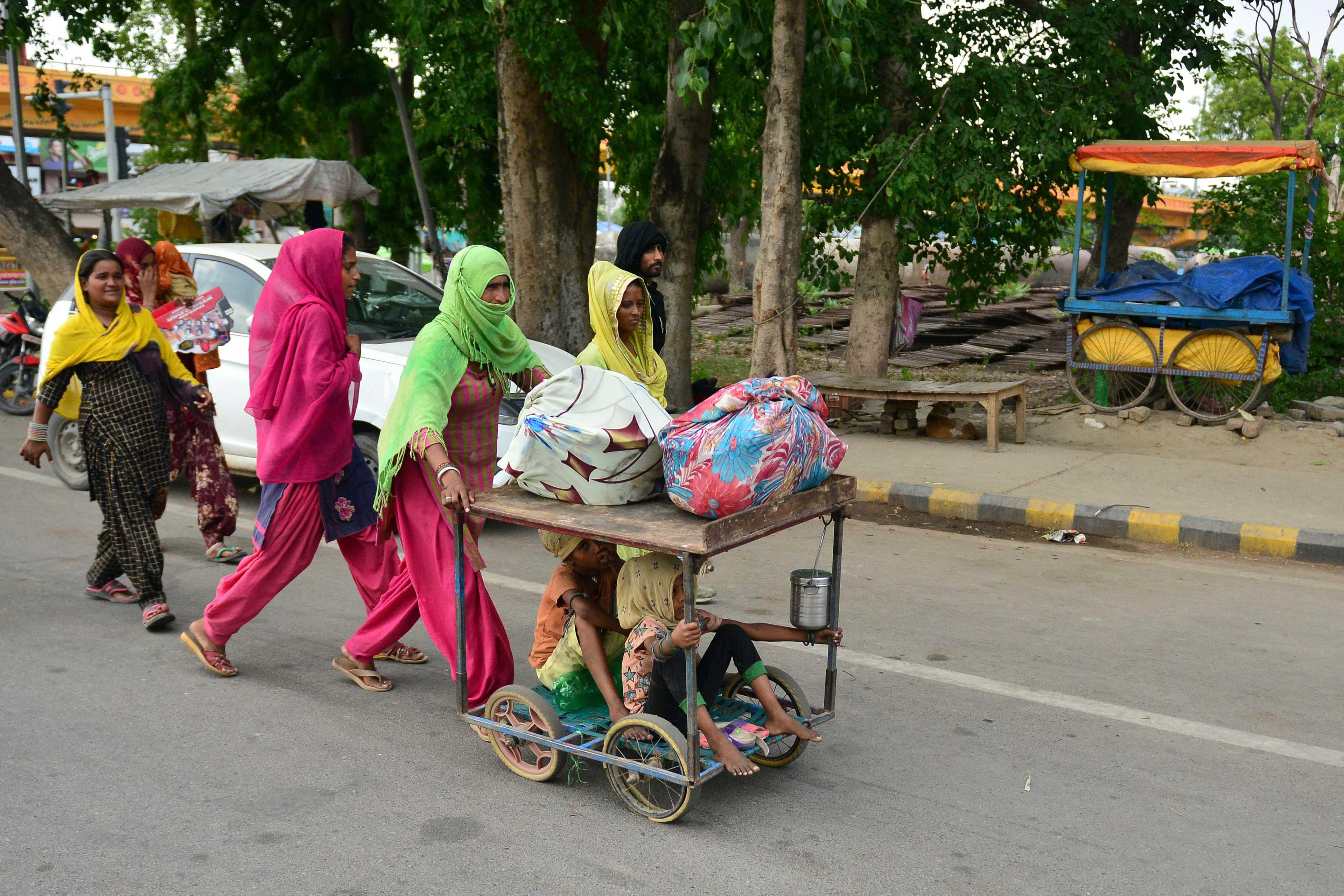India's migrant millions: Caught between jobless villages and city hazards
According to 2011 figures, the latest available, India's then population of 1.21 billion people included 456 million internal migrants.
Just In
As he crosses the mud houses and wheat fields around his village to catch a train to distant Mumbai, Sujeet Kumar says he is thinking about the better life that awaits him in India's city of dreams.
The 21-year-old from Jaunpur district, in India's most populous state of Uttar Pradesh, was headed for the country’s financial capital, saying he moved out of "compulsion", like hundreds of millions of others before him.
"Mumbai is a city of the rich... whoever goes to Mumbai, their luck changes," Kumar said. "I hope luck smiles on me also there, and I will also make progress."
This internal migration is bound to intensify as India becomes the world's most populous nation, throwing up enormous challenges for the government - managing the strains on urban infrastructure as well as creating 8 million to 10 million jobs every year to absorb its army of young unemployed.
According to 2011 figures, the latest available, India's then population of 1.21 billion people included 456 million internal migrants.
The United Nations had projected India's population would reach over 1.42 billion last week, overtaking China.
Nearly two-thirds of India's people are under 35 and many of those in the countryside flock to the cities to take whatever job they can - becoming labourers, drivers or helpers in shops and homes. Many are from Uttar Pradesh and neighbouring Bihar state, where populations are rising faster than elsewhere in the country.
"Migrants are always concentrated in more precarious work. Better jobs are not available to migrants and they have very little political power to negotiate wages," said Mukta Naik, an expert on migration at New Delhi's Centre for Policy Research.
"There are not enough jobs, and they are not good enough to attract people for the long term, not good enough wages to invest in housing, to get their children to the cities to study."
Besides the low-paid and difficult-to-get jobs, those arriving in the cities are faced with prohibitive costs of living and a struggle to find a place to live. They are unable to access social welfare benefits and many fall victim to the crime rampant in urban slums.
Abdul Nur, a 37-year-old security guard in Bengaluru, said he left his village in the northeastern state of Assam when he was 17, and has since lived and worked in Chennai, Hyderabad and Mumbai cities.
"When I was in Mumbai, there was too much tension. It was hot, there was crime," he said.
He was in India's financial capital a decade ago, where, he said, it was very tough to live on the US$171 (about RM760) he earned a month, with high rents and cost of food.
But even Bengaluru, India's tech capital which is attracting huge numbers of migrants, has become too expensive, Nur said.
"I am sending my wife and child back to the village," he said. "In my salary it is very tough to educate him here. I will live alone now."
Going back
Some of the migrants have become so disheartened they are returning home.
Bhikhari Manjhi, 30, left his village in Odisha state and moved to Bengaluru where he was promised a job as a construction worker with a salary of 10,000 rupees a month. For two months, his contractor paid him 100 rupees every week, promised to pay the rest later, but never did.
"When we demanded our money, we were beaten up," Manjhi said.
Earlier this month, Manjhi walked for about 1,000km for over seven days with two fellow villagers to return home.
Now, he said: "We live in the forest area, and can earn about 15,000 rupees in a year."
In cities like Bengaluru, more than that can be made in a month. But Manjhi said: "I don't want to go back".
A 2020 International Labour Organization report said migrant workers contribute 10% of India’s GDP and serve as the backbone of several sectors. The money they send back reduces poverty at home and improves the well-being of their families, it said.
Experts say the government needs to help create more jobs and ensure they are distributed across the country, especially in the poorly-developed and predominantly rural north and the east.
"Rural India (only) provides jobs in the form of disguised unemployment," said Mahesh Vyas, who heads the Centre for Monitoring Indian Economy.
This meant, he said, that even if more jobs are created in agriculture, they do not add to output. And apart from agriculture, the only investment in the hinterlands is in temporary infrastructure projects, which produce short-lived jobs.
The cities, with all their shortcomings, will continue to attract migrants as they remain the best places to offer jobs, he said.
Kumar from Jaunpur echoes that.
Sporting a new haircut and a pair of sunglasses, he shot videos and photos for his social media accounts during a visit to Mumbai’s tourist spots.
"I am really liking it here... so much better than my village," he said.
Subscribe to our newsletter
To be updated with all the latest news and analyses daily.
Most Read
No articles found.
